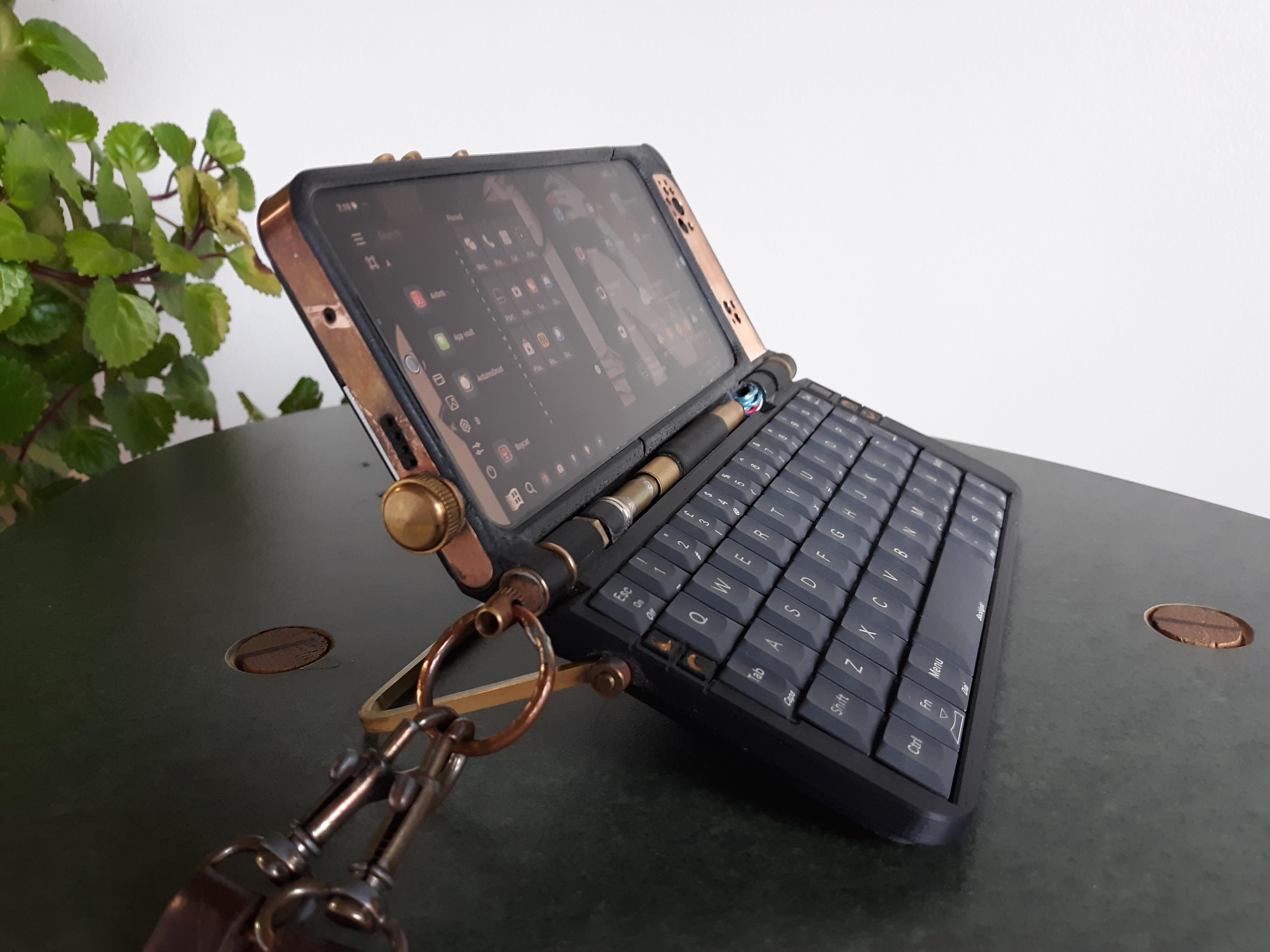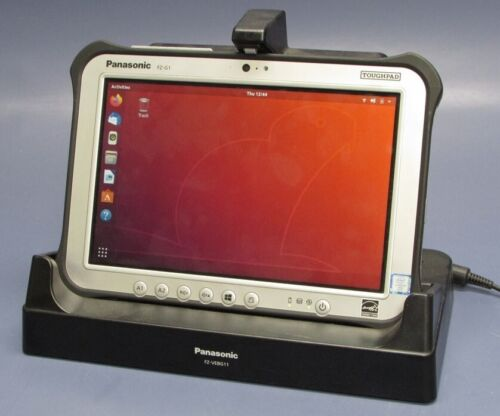Multilayer microhydraulic actuators represent a cutting-edge innovation in the field of precision actuation, harnessing fluid physics on a microscale to achieve remarkable efficiency and performance. These advanced devices stand out in the realm of robotics technology, showcasing the ability to generate high torque without the need for high operating voltages, unlike traditional electrostatic motors. Given their structure that comprises multiple layers, they facilitate intricate movements and operations, ideal for applications such as microelectromechanical systems (MEMS) devices, where precision is paramount. By manipulating the electrostatic forces between droplets, multilayer microhydraulic actuators not only excel in functionality but also offer impressive adaptability, pushing the boundaries of what’s achievable in compact motor design. As industries continue to seek innovative solutions, these actuators could revolutionize applications in robotics and beyond, establishing new standards for performance and efficiency.
Also known as electrowetting motors, multilayer microhydraulic actuators utilize fascinating principles to achieve linear and rotational motions. These miniature powerhouses leverage the hydrodynamic manipulation of microdroplets to deliver outstanding force and precision, making them pivotal components in microscale applications. With their ability to operate at low voltages while maintaining high torque output, these actuators are a game-changer for technologies reliant on MEMS designs. The innovative layering technique not only enhances performance but also provides versatility in adapting to various operational demands, further propelling their relevance in modern robotics technology. As the development of devices tailored for fine movements continues, electrowetting-driven solutions emerge as vital players in redefining how we approach actuation within compact systems.
Understanding Electrostatic Motors and Their Limitations
Electrostatic motors, while innovative, have faced numerous challenges since their inception. Unlike traditional motors that rely on electromagnetic forces, these devices operate based on the interaction of static charges. This fundamental difference comes with its own set of hurdles, primarily due to the weak nature of electrostatic forces compared to electromagnetic interactions. As a result, electrostatic motors historically struggle with high voltage requirements and minimal torque output, making them impractical for widespread applications. This limitation has led engineers and researchers to search for more effective motor designs that can harness similar concepts but with improved functionality.
The early designs of electrostatic motors, such as those created by Benjamin Franklin and Andrew Gordon, showcased the potential of static electricity for generating motion. Yet, the journey from those initial prototypes to modern applications has been fraught with obstacles. For example, while these motors can be effective at microscale, the forces involved remain significantly weaker than those in electric motors. Consequently, their adoption has been limited, leading to a focus on developing multipurpose actuators, such as multilayer microhydraulic actuators, that capitalize on electrostatic principles while overcoming the limitations inherent in older designs.
The Revolutionary Potential of Multilayer Microhydraulic Actuators
Multilayer microhydraulic actuators represent a significant advancement in micro actuation technology, combining the principles of electrostatics with innovative fluid dynamics. By stacking multiple layers of actuators, researchers have developed systems capable of delivering high torque and precision without the need for high operating voltages. This innovative approach reflects a growing trend in robotics technology that seeks to enhance performance while minimizing complexity and size. These actuators are particularly well-suited for micro-robotic applications where traditional motors might falter due to insufficient torque or control.
The design of multilayer microhydraulic actuators allows for a unique combination of speed and force configurations. By manipulating how each layer interacts with the others, these devices can prioritize either rapid motion or high output force to suit specific functional requirements. For instance, in medical applications such as robotic surgery, precise control is critical, and the multilayer configuration enables fine-tuned movements essential for delicate operations. This flexibility significantly enhances the potential applications for multilayer microhydraulic actuators, paving the way for their integration into a range of sophisticated systems.
The Role of MEMS Devices in Micro Actuation
Microelectromechanical systems (MEMS) have redefined the landscape of precise actuation, relying on the interplay between mechanical elements at a micro scale. With their integration into multilayer microhydraulic actuators, MEMS technology allows for the miniaturization of devices while maintaining high performance. The low voltage operation of MEMS devices, in conjunction with the electrowetting principles utilized by multilayer actuators, sets the stage for innovations in fields where precision and efficiency are paramount. This synergy is instrumental in environments that require careful manipulation at minimal scale, such as in biomedical devices.
The importance of MEMS devices extends beyond mere size reduction. Their inherent design allows for the development of highly intricate structures that can produce significant torque and speed with very low power consumption. This quality is essential in modern robotics, where energy efficiency can lead to longer operational times and reduced battery usage. The challenge moving forward will be to balance the advantages of MEMS technology with the complexities of maintaining performance across various environments—ensuring that multilayer microhydraulic actuators remain robust and reliable in their applications.
Applications in Robotics Technology Using Microactuation
The surge in interest surrounding multilayer microhydraulic actuators is driven largely by their potential applications in robotics technology. As devices that can perform precise, controlled movements while taking up minimal space, they are perfect for integration into compact and sophisticated robotic systems. From robotic limbs in prosthetics to micro-robots designed for intricate tasks, these actuators enhance dexterity and operational capability significantly. Their ability to operate without external gearing further simplifies design challenges and opens up new possibilities for performance.
Moreover, as robotics technology advances, the demand for motors that can provide not just power but also versatility has become pronounced. Multilayer microhydraulic actuators fit this demand by delivering scalable performance that can adapt to both speed and force requirements depending on the application. This adaptability makes them ideal candidates for environments where traditional motors would fall short, particularly in medical robotics where precision and control are paramount. The implications of this technology could redefine standards in robotic design and function.
Advancements in Precision Actuation Technologies
The evolution of precision actuation technologies in recent years has been marked by novel materials and designs that enable remarkable performance at micro scales. One of the leading technologies in this domain is the multilayer microhydraulic actuator, which incorporates advanced electrostatic principles to achieve high efficiency and control. With layers designed for specific tasks, such as pushing or pulling, these actuators can achieve superlative precision levels unattainable by traditional motors. This advancement is poised to impact a variety of fields, from delicate medical procedures to intricate robotic assembly.
The future of precision actuation technologies hinges on continuous exploration and innovation. As researchers investigate new materials and configurations for multilayer actuators, the potential for further performance enhancements becomes apparent. Innovations in dielectric materials or actuator array designs could improve efficiency and maneuverability, pushing the capabilities of these devices further. Thus, the ongoing refinement of precision actuation technologies undermines traditional motor systems, presenting opportunities for creating next-generation robotics and automated systems.
Constructing High-Efficiency Electrostatic Actuators
Constructing high-efficiency electrostatic actuators involves sophisticated engineering that transcends conventional designs. With advancements in material sciences, the integration of low-loss dielectric materials into these actuators facilitates enhanced performance, minimizing energy consumption while maximizing output efficiency. Additionally, implementing innovative layered designs enables engineers to create actuators that cater to specific tasks, such as greater torque delivery or enhanced responsiveness. Each layer can be engineered independently, taking full advantage of the unique properties of the materials used.
The potential benefits of high-efficiency electrostatic actuators extend well into industries such as robotics and medical devices. With energy-efficient designs, the operational costs can be reduced significantly, while also promoting sustainability by lowering energy consumption levels. Furthermore, precise control characteristics make these actuators invaluable in high-tech applications, where minor movements can have far-reaching implications. The integration of multilayer microhydraulic actuators could be pivotal in transitioning from traditional manufacturing to more sustainable and innovative practices.
Challenges and Solutions in Developing Microhydraulic Systems
Despite the promising capabilities of multilayer microhydraulic actuators, their development is not without challenges. One major hurdle lies in ensuring precision during fabrication processes, as the fluidic components of these devices are highly susceptible to factors such as evaporation and contamination. To maintain optimal performance, careful handling and assembly in controlled environments are necessary. Addressing these challenges is crucial to unlocking the full potential of microhydraulic systems and easing their integration into real-world applications.
Innovative solutions are emerging to tackle these challenges head-on. For instance, researchers are exploring advanced fabrication techniques that minimize contamination risks, as well as developing protective coatings that can enhance durability. By focusing on cleanroom environments and precise manufacturing protocols, the industry can ensure that multilayer microhydraulic actuators maintain their performance over time. As these systems continue to evolve, it is likely that advancements will emerge that not only address current issues but also expand the capabilities and adaptability of such technologies in various fields.
Future Applications and the Path Ahead for Actuator Technologies
The future landscape of actuator technologies is set to be transformed by the advancements in multilayer microhydraulic actuators. As their development progresses, potential applications within small-scale robotics, biomedical devices, and other precision-demanding fields will become more pronounced. Envisioned applications include sophisticated robotic arms for surgeries and even automated systems for intricate assembly tasks. The scalability of these actuators ensures that as they shrink in size, their performance will enhance, paving the way for entirely new possibilities in actuation.
Looking ahead, research will continue to focus on optimizing designs and materials to maximize torque, speed, and efficiency while mitigating the current challenges associated with microhydraulic systems. The integration of digital technologies will further amplify the scope of these actuators, enabling smart control systems that can foresee and adapt to changing operational conditions. In essence, the ongoing journey of multilayer microhydraulic actuators point towards a future enriched with enhanced robotics technologies that embody innovation, efficiency, and precision.
Frequently Asked Questions
What are multilayer microhydraulic actuators and how do they function?
Multilayer microhydraulic actuators represent a cutting-edge technology that utilizes a series of stacked layers, each containing electrodes and droplets for precision actuation. By applying an electric field, these electrodes manipulate droplets, creating motion through electrowetting effects. This innovative design allows for significant torque and power density at low voltages, making them ideal for micro-robotic applications.
How do multilayer microhydraulic actuators compare to traditional micro hydraulic actuators?
Multilayer microhydraulic actuators differ from traditional micro hydraulic actuators by leveraging multiple layers of electrodes and fluidic droplets to generate motion, allowing for enhanced torque and efficiency. Unlike conventional micro hydraulic actuators that rely heavily on external power sources and gearing, these multilayer systems can achieve high performance in a more compact form, making them more suitable for precise applications in robotics and medical devices.
What potential applications do multilayer microhydraulic actuators have in robotics technology?
In robotics technology, multilayer microhydraulic actuators offer applications in micro-robotic systems, enhancing dexterity and precision in tasks such as robotic surgery. Their ability to deliver high torque without the need for external gearing optimizes performance in small-scale robots, enabling fine movements and responsive robotic joints.
What are the advantages of multilayer microhydraulic actuators over electrostatic motors?
Multilayer microhydraulic actuators provide significant advantages over traditional electrostatic motors, including improved torque, efficiency, and operation at lower voltages. By utilizing a multilayer design and fluid physics, these actuators can achieve higher performance levels and reduced size, making them more effective for modern applications in MEMS devices and robotics.
How does the scaling of multilayer microhydraulic actuators affect their performance?
As multilayer microhydraulic actuators are scaled down, their performance increases exponentially regarding torque and power density. This means that reducing the droplet pitch can lead to substantial improvements in effectiveness, making these actuators particularly suitable for intricate tasks within microscale applications.
What challenges are associated with the fabrication and use of multilayer microhydraulic actuators?
The primary challenges with multilayer microhydraulic actuators include the need for precision fabrication to avoid evaporation and contamination of the fluidic components. They are sensitive to environmental conditions, requiring careful handling and assembly in clean environments to maintain performance, and their delicate nature makes them unsuitable for large-scale or rugged applications.
Can multilayer microhydraulic actuators be used for large-scale applications?
No, multilayer microhydraulic actuators are specifically designed for small-scale applications and are not suitable for large-scale uses like powering drones or electric vehicles. Their unique characteristics shine in micro-robotics and precision tasks, rather than in more demanding industrial applications.
What are MEMS devices, and how do multilayer microhydraulic actuators fit into this category?
MEMS devices, or microelectromechanical systems, are tiny integrated devices that combine mechanical and electrical components at microscale levels. Multilayer microhydraulic actuators fit into this category by utilizing MEMS principles to effectively control droplet motion with electric fields, enhancing actuation capabilities in compact formats.
What materials are commonly used in multilayer microhydraulic actuators?
Multilayer microhydraulic actuators typically utilize materials like polyimide for the actuator layers and specialized dielectric materials for the electrodes. The choice of materials is crucial for achieving low power operation and maintaining high efficiency and durability in the actuator’s performance.
How do multilayer microhydraulic actuators enhance power density in robotic applications?
Multilayer microhydraulic actuators enhance power density by integrating multiple layers of electrodes and fluidic elements, allowing for efficient force generation without increasing size. This capability enables them to provide high thrust and precision necessary for advanced robotics, making them ideal for intricate robotic movements and applications.
| Key Point | Details |
|---|---|
| Electromagnetic Motors | Most motors rely on electromagnetic interaction to generate motion. |
| Electrostatic Motors | These motors operate using electrostatic forces, which are less effective and require high voltages. |
| Microelectromechanical Systems (MEMS) | MEMS use electrostatics successfully at microscale but remain lesser known than other motors. |
| Research Insights | Recent studies suggest improving electrostatic motor performance by combining low voltage operation, high torque, and high efficiency. |
| Multilayer Microhydraulic Actuators | These actuators stack layers with droplets and electrodes for high precision, torque, and compact design. |
| Applications | Ideal for micro-robotic systems and medical devices due to their ability to control movement without external gearing. |
| Scalability | Performance increases exponentially as the actuators scale down in size. |
| Challenges | Precision fabrication is needed to handle the fluidic nature, contamination and evaporation concerns must be managed. |
Summary
Multilayer microhydraulic actuators represent an innovative leap in actuation technology, leveraging the principles of electrostatics at a microscale to deliver precise movement and control. These advanced devices are particularly noteworthy for their ability to provide high torque and efficiency while operating at low voltages, making them ideal for applications in robotics and medical fields. As this technology continues to develop, it promises to unlock new capabilities in miniature systems, transforming how we approach tasks that require delicate precision and responsiveness.












